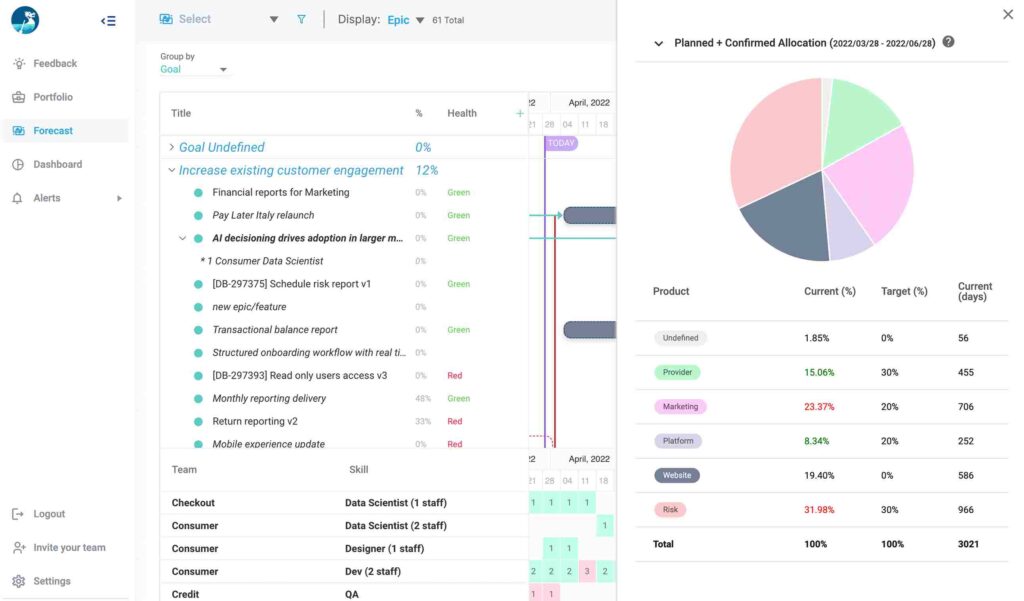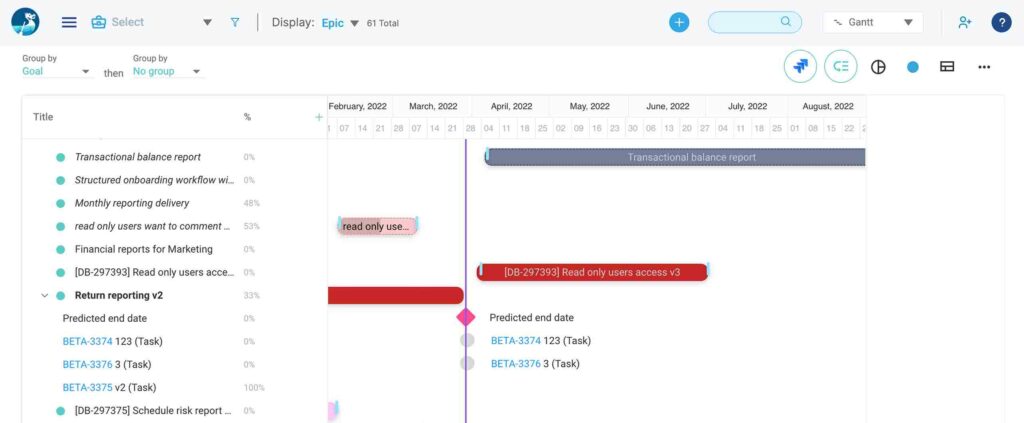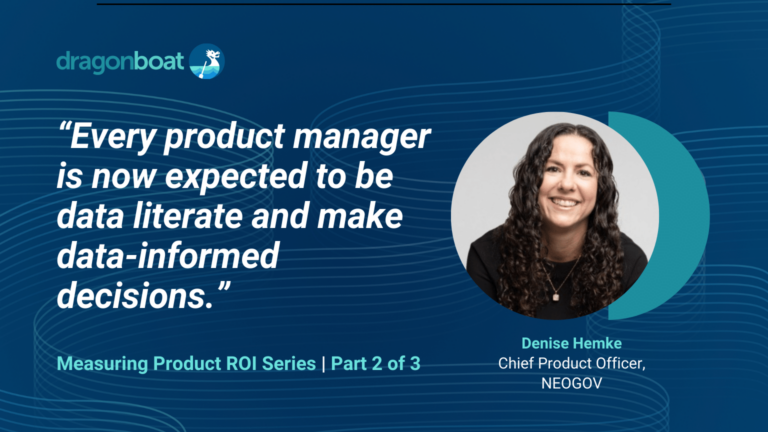A product management workflow is how a product idea is pushed through its process and often refers to a number of things such as creating a product, updating a product, adding a new product feature, and even removing a product. Though the process for each of these things will always look different, the steps you need to maximize your time and effort should always be the same.
A product team can only be as effective as its workflow. A great product management workflow will push your organization towards its goals, streamline the product development process, and enable effective cross-team collaboration. But what defines a winning product management workflow? This article will take you through the steps of an outcome-driven product management workflow.
Why Focus on Outcomes?
We’re all familiar with a product management workflow, but what are the advantages of an outcome-driven product management workflow?
Many teams without a well-defined product management workflow experience the following:
- Wasted time and energy just getting up to date
- Reacting to roadblocks after they occur rather than adjusting to avoid roadblocks before
- Getting lost/overwhelmed when things go wrong
- Easily getting disconnected from the big picture
All of these pain points add unnecessary steps to the product management workflow. An outcome-driven product management workflow will avoid all of the above by allowing you to do 3 main things:
- Align every step of your product development to your overall objectives
- Empower data-driven decision making and iteration
- Create clarity and enable effective cross-team collaboration
By adding an outcome-driven mindset to your product management workflow, teams can push their organization forward with every step. The power is in the fact that the process emphasizes organizational visibility and clearly defined objectives. That way even when things veer off-plan (and they always seem to) your team can feel secure knowing that product leaders can easily adapt and adjust.
Now let’s jump into what you should keep in mind for an outcome-driven product management workflow.
Steps to Follow an Outcome-Driven Product Management Workflow
This guide covers how to use Dragonboat for the best practice outcome-focused product management workflow.
The best practice product management workflow can be represented in 3 timeframes.
- Before Product
- Collect and evaluate feedback / requests
- Define and prioritize objectives / focuses
- Evaluate and prioritize initiatives best to achieve these objectives
- Before Scrum
- Organize and prioritize product ideas by objectives, themes, or other dimensions
- Estimate to understand / adjust resources required for each Idea
- Push to engineering tool for execution
- During Scrum
- See progress automatically rolled up
- Keep stakeholders and teams up to date
- After Scrum
- Evaluate product outcomes continuously to help evaluate and prioritize future roadmaps
Now let’s take a look at how to execute each of these outcome-driven product management workflow steps.
Before Product
Think of the timeframe before you push your product through as your opportunity to strategize and align. This will set your product up for success in the long run by giving you a reference point to return to, allowing you to adjust for the inevitable changes along the way.
1. Collect and Evaluate Feedback and Requests
You can’t build everything at once and even if you could, doing so would stick you in a build trap. That being said, you want a place to put all the ideas, requests, and feedback so you can centrally manage and prioritize as you go.
Dragonboat’s request module allows you to collect, organize, and prioritize feedback before linking any of them to new or existing product features or initiatives (which you can do at any time).

2. Define and Prioritize Objectives / Focuses
Ask yourself 3 main questions:
- “What are we building?”
- “How will this help us achieve our outcomes”
- “What are the metrics we can use to measure success?”
Answering these questions before starting any process will allow you to be mindful of the objective in every task you do. Keep in mind that these goals only need to be specific in scope and direction but can remain general in objective. Also be cognizant of your resources, because resources will determine whether your objective is actionable or a wishlist.
You should seek to answer these questions with your team and although you do not need to agree on every answer, you do need to be aligned on the conclusion.
Once you’ve tackled these first, you can begin to narrow your scope as you get deeper into your workflow with the comfort of knowing that everything connects to a broader objective.

3. Evaluate and Prioritize Initiatives Best to Achieve these Objectives
An Initiative represents a big undertaking that may have multiple Ideas. In a Responsive PPM framework, Initiative may be at the top or middle level of an organization’s strategy and execution horizon. An initiative, also sometimes called a program, spans a few months or quarters (whereas an idea would span a few weeks), could involve multiple teams, have multiple releases and could have its own estimates, timeframe, roadmap and/ or objective.
Once your initiatives are added, you can begin easily dragging and dropping Ideas into the related Initiatives. Now for the fun part – prioritization!
Before Scrum
Now that you’ve squared away the important basics of what your product will look like, you can begin to flesh out the aspects of your plan. Create a clear, visible, and actionable roadmap with the following steps:
1. Organize and Prioritize Ideas
The first step before scrum is organization and prioritization. To best prioritize your backlog, you need to have all your ideas clearly laid out. We recommend organizing your ideas by their objective, themes, and product as seen in the example below.

When deciding how to prioritize, there are many scoring models you can use like RICE to determine what idea will have the most impact towards your goal. Ideally, the model you choose will also allow you to remain responsive and iterative to changes in product development.

2. Estimate Resources
This next step serves as a vital indicator of your product investments. Create high-level estimates or T-shirt sizing to get an idea of where you need to allocate more resources and identify any bottlenecks.
Lastly, adjust the resources required to balance allocation across your portfolio.

3. Team Execution
Now that your planning is done, it’s time to get the work done. Share your plan with your team for visibility and context. Then push your data set to Jira, Github issues, Shortcut or whatever DevOps tool you use so your team can begin carrying out your product plan.
During Scrum
From the start of ideation, your product management workflow has considered the big picture. Now to complete your outcome-driven process start to finish, you will need real-time visibility during and after scrum.
1. Check Progress from Engineering Tools like Jira, Github, or Shortcut
Stay ahead of potential roadblocks with progress roll up and visibility. Tools like Dragonboat can do this automatically so teams can easily do check-ins and focus on the areas that need attention.

2. Keep Stakeholders and Teams Up to Date
Embed in wiki/ Confluence and create customized reports for various stakeholders to create clarity and visibility around the roadmap plan and progress.

After Scrum
Outcome-driven product teams evaluate product outcomes continuously to help evaluate and prioritize future roadmaps. Creating a snapshot view for your execs to easily see both outcome and roadmap progress is a great way to connect the strategy and execution to understand what’s working, what’s not and what needs to be adjusted.

Outcome-driven product management is all about sticking to the big picture while remaining iterative to change. Having an effective outcome-driven product management workflow empowers you to manage setbacks because you can confidently return to your plan knowing that you can adapt.





